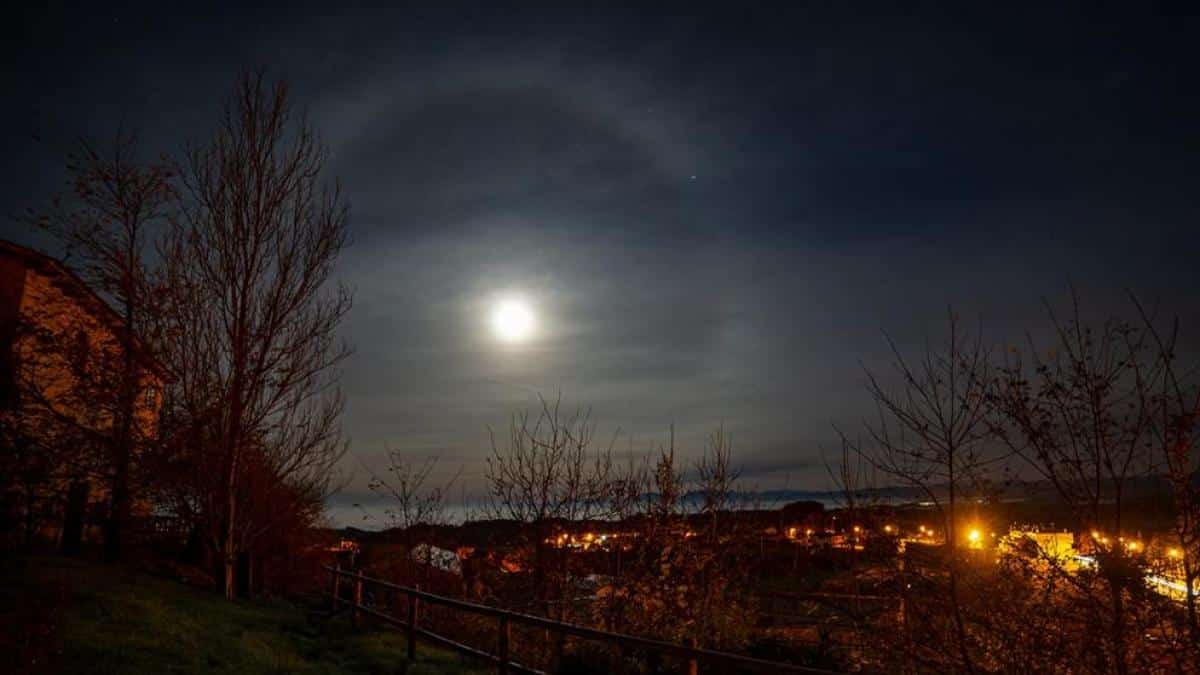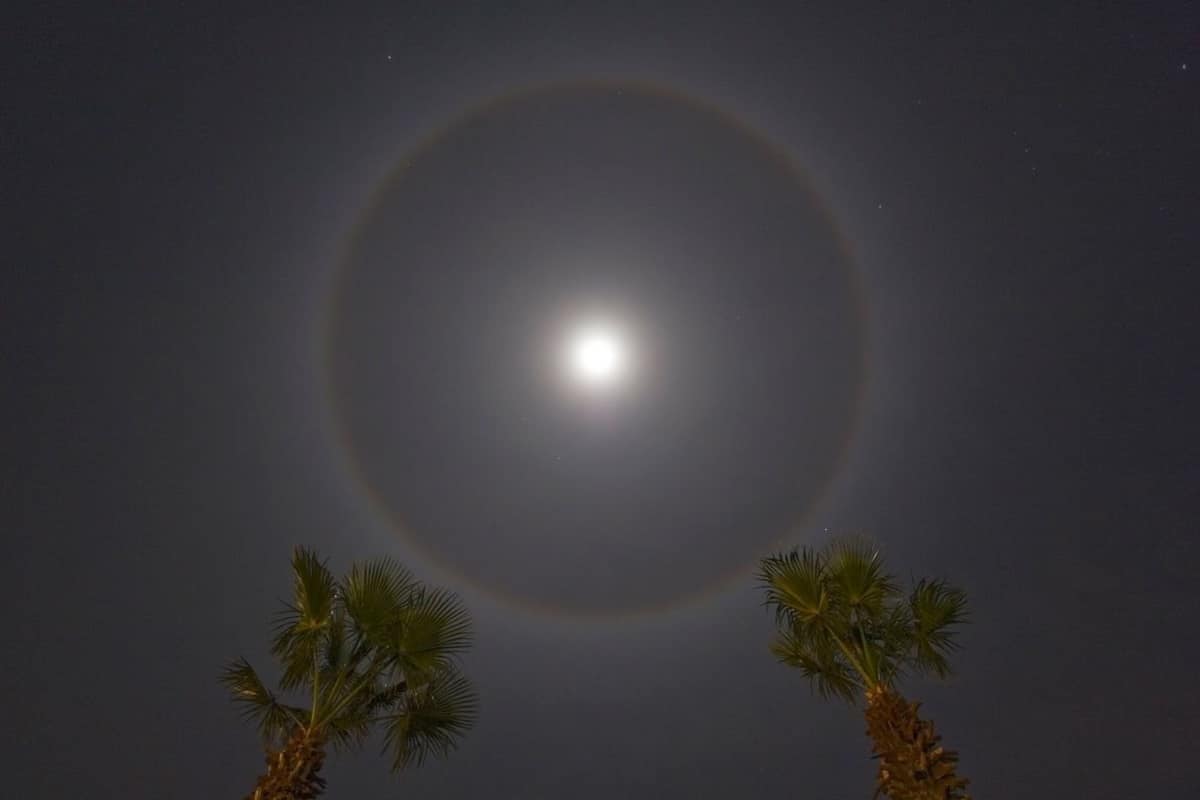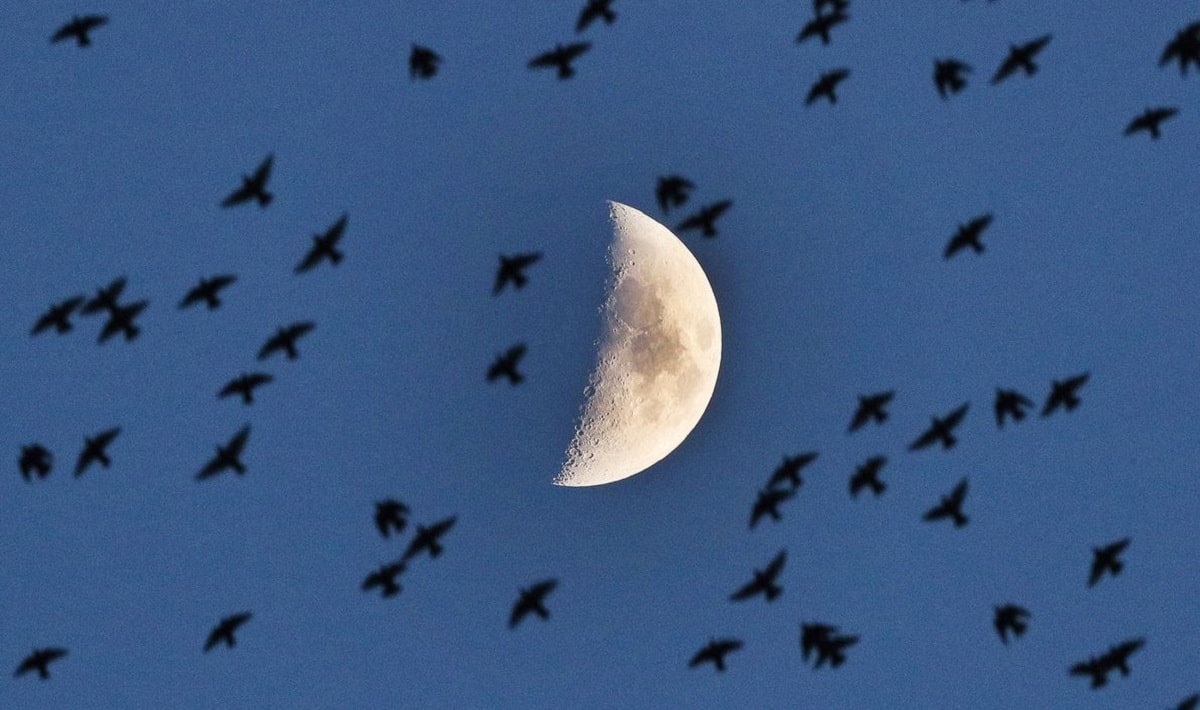
From time to time, we see a phenomenon called a halo around the moon or sun, which usually shows an iridescent disk around the outer circumference of each star. In general, the phenomenon is common in the colder regions of the world, such as Antarctica, Greenland, Alaska and Siberia, but it can also be seen in other places with ideal climatic conditions. The moon halo It can come to indicate certain situations.
In this article we are going to tell you everything you need to know about the lunar halo, its characteristics, origin and what it means.
What is the lunar halo

In moderate atmospheric conditions where This phenomenon can be observed in temperate regions, light clouds crystallized by the cold, called cirrus clouds, can be produced. This atmospheric phenomenon occurs when small ice particles are suspended in the air directly in the troposphere, and these particles are refracted when they receive sunlight, creating a spectrum around the moon or sun.
One of the qualities of the ring formation that we can highlight is that it is iridescent, creating an effect as if it had its own "light", consisting of red (inside the ring) and teal on the outside of the ring. This. However, sometimes it seems like a whole rainbow is forming.
The color that is usually seen is white, sometimes it reaches a completely pale hue due to the backlight that is produced by the color of the sky. The physical phenomena that make this happen are reflections and refractions in ice crystals.
These usually form in the highest clouds that can form in the atmosphere, called Cyrus, They can reach heights of 20.000 meters. Going back to the issue of halos, one of the most common halos that is commonly produced is the halo formed by the refractive process, which causes light to pass through hexagonal crystals.
Types of lunar halo

This phenomenon usually occurs in the troposphere, the lowest layer of the atmosphere and where most of the weather events on Earth occur. As if that were not enough, much of the different types of cloud layers that exist tend to form and accumulate in this layer.
In recent years, this layer of the Earth's atmosphere has undergone certain changes, becoming increasingly cold in most of its extension (10 km high), reaching -65º in most areas. Because of this, dust particles and ice crystals tend to accumulate in this layer, an essential ingredient in the formation of these types of clouds.
In the case of the halo, the ring is formed when moonlight manages to refract through small ice crystals. However, if we compare them with solar halos, there is a key difference, because this type of halo is only visible when the clouds are high enough (close to the satellite).
If all these features were present, a typical hexagonal ice crystal would form, deflecting moonlight at a tilt angle of 22°, thus forming a complete ring with a diameter of 44°.
Another characteristic that must be mandatory to be able to observe this phenomenon is that the moon must be in the full moon phase, since it is difficult to observe the halo when the satellite is in other phases.
Origin and formation

It is known that any iris halo, halo, or ring is an optical effect that produces a disk or ring around the moon (or sun) with an iridescent character on the outer side of the projection disk, i.e., the tone of the light. It changes depending on the viewing angle, this effect is similar to what is seen on CDs, DVDs that are widely used today.
The pointed iridescent effect is caused by multiple translucent surfaces on which phase changes and interference from light refraction are perceived, lengthening or shortening the wavelength depending on the angle and distance of each observer from the object.
The light projected in this rainbow effect is modulated or graduated in one way or another due to the interference that occurs when the light passes, also depending on the viewing angle, different colors will be projected on higher or lower intensities, producing the described effect. They are, as already stated, a process similar to the appearance of a rainbow.
The best places to observe the lunar halo they are Alaska, Atlantis, Greenland and northern Scandinavia, as well as the northern regions of Russia and Canada (near the North Pole). However, scientifically speaking, this phenomenon can be perceived anywhere, as long as the corresponding atmospheric conditions exist. Even where there are storms.
The ice particles in the clouds, in the region of the troposphere, when they are in suspension create a range of colors around the Moon or the Sun depending on the situation. Typically, red tones are observed in the inner area of the ring and green or bluish in the outer area. In a way, it can be like a full rainbow, that is, round.
The most common lunar halos are yellowish and, in some cases, white. It was formed from terrestrial regions, or from other planets with atmospheres. The optical effect is the reflection and refraction of light, through the small crystals already indicated, which constitute the high-altitude clouds of the cirrus type (that is, those high-altitude clouds with small crystals).
Conditions for the lunar halo to occur
In any case, the halo represents a rare luminous phenomenon since several conditions must be met, such as that there must be a cold and iridescent atmosphere, as well as enough crystals to deflect the light.
The intensity of the moonlight, depending on its position, increases or decreases, which explains why each observer perceives a different image from their position, each person. The deflections of light when it passes through or hits the glass sand manifest in multiple directions, and the collection of all these deviations forms the projected ring.
The low temperatures required to form a halo logically affect the weather to some degree, so it is explained that a halo indicates a change in the environment. On the other hand, the same details of a common cold can indicate certain effects on the health of some people, being able to produce respiratory diseases or similar.
I hope that with this information you can learn more about the lunar halo and its characteristics.